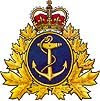
So on December 22nd, (The Winter Solstice...), we had the "shortest" day of the year. What this actually means is that the 22nd of December is the one day of the year, in which we experience the least amount of daylight. Hence the term 'short'. It just seems that way because of the limited amount of daylight.
From this day onwards, sunset is approximately one minute later and sunrise approximately one minute earlier, each day right up to June 21st.
Conversely, June 21st (the summer solstice...), is just the opposite. It is the "longest" day of the year, as it is the day when we experience the most amount of daylight.
From this day onwards, sunset is approximately one minute earlier and sunrise approximately one minute later each day until December 22nd.
Of Solstices and Equinoxes.
SOLSTICE
SUMMER SOLSTICE: The first day of the Season of Summer. On this day (JUNE 21 in the northern hemisphere*) the Sun is farthest north and the length of time between Sunrise and Sunset is the longest of the year.
WINTER SOLSTICE: The first day of the Season of Winter. On this day (DECEMBER 22 in the northern hemisphere*) the Sun is farthest south and the length of time between Sunrise and Sunset is the shortest of the year.
* In the southern hemisphere, winter and summer solstices are exchanged. Summer: December 22. Winter: June 21.
EQUINOX
Two times of the year when night and day are about the same length. The Sun is crossing the Equator (an imaginary line around the middle of the Earth) and it is an equal distance from the North Pole and the South Pole.
SPRING EQUINOX: The first day of the Season of Spring - and the beginning of a long period of sunlight at the Pole. In the northern hemisphere: MARCH 20 (the Sun crosses the Equator moving northward). In the southern hemisphere: SEPTEMBER 22 (the Sun crosses the Equator moving southward).
AUTUMN EQUINOX: The first day of the Season of Autumn - and the beginning of a long period of darkness at the Pole. In the northern hemisphere: SEPTEMBER 22 (the Sun crosses the Equator moving southward). In the southern hemisphere: MARCH 20 (the Sun crosses the Equator moving northward).
The NRC (National Research Council of Canada) has a website which features a Sunrise/Sunset calculator for any town or city in Canada. Give it a visit at the link below, if you have a mind to:
http://www.hia-iha.nrc-cnrc.gc.ca/sunrise_e.html
The same service is available Stateside, of course. You can access their search website at the link below:
http://www.sunrisesunset.com/usa/
I happen to believe that knowledge is a very, very cool thing and you can never have too much of it. You know what they say... "You should only stop learning when they close the lid on your box."
Have a fun day!
From this day onwards, sunset is approximately one minute later and sunrise approximately one minute earlier, each day right up to June 21st.
Conversely, June 21st (the summer solstice...), is just the opposite. It is the "longest" day of the year, as it is the day when we experience the most amount of daylight.
From this day onwards, sunset is approximately one minute earlier and sunrise approximately one minute later each day until December 22nd.
Of Solstices and Equinoxes.
SOLSTICE
SUMMER SOLSTICE: The first day of the Season of Summer. On this day (JUNE 21 in the northern hemisphere*) the Sun is farthest north and the length of time between Sunrise and Sunset is the longest of the year.
WINTER SOLSTICE: The first day of the Season of Winter. On this day (DECEMBER 22 in the northern hemisphere*) the Sun is farthest south and the length of time between Sunrise and Sunset is the shortest of the year.
* In the southern hemisphere, winter and summer solstices are exchanged. Summer: December 22. Winter: June 21.
EQUINOX
Two times of the year when night and day are about the same length. The Sun is crossing the Equator (an imaginary line around the middle of the Earth) and it is an equal distance from the North Pole and the South Pole.
SPRING EQUINOX: The first day of the Season of Spring - and the beginning of a long period of sunlight at the Pole. In the northern hemisphere: MARCH 20 (the Sun crosses the Equator moving northward). In the southern hemisphere: SEPTEMBER 22 (the Sun crosses the Equator moving southward).
AUTUMN EQUINOX: The first day of the Season of Autumn - and the beginning of a long period of darkness at the Pole. In the northern hemisphere: SEPTEMBER 22 (the Sun crosses the Equator moving southward). In the southern hemisphere: MARCH 20 (the Sun crosses the Equator moving northward).
The NRC (National Research Council of Canada) has a website which features a Sunrise/Sunset calculator for any town or city in Canada. Give it a visit at the link below, if you have a mind to:
http://www.hia-iha.nrc-cnrc.gc.ca/sunrise_e.html
The same service is available Stateside, of course. You can access their search website at the link below:
http://www.sunrisesunset.com/usa/
I happen to believe that knowledge is a very, very cool thing and you can never have too much of it. You know what they say... "You should only stop learning when they close the lid on your box."
Have a fun day!
















No comments:
Post a Comment